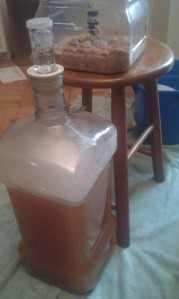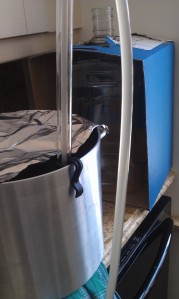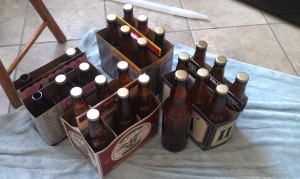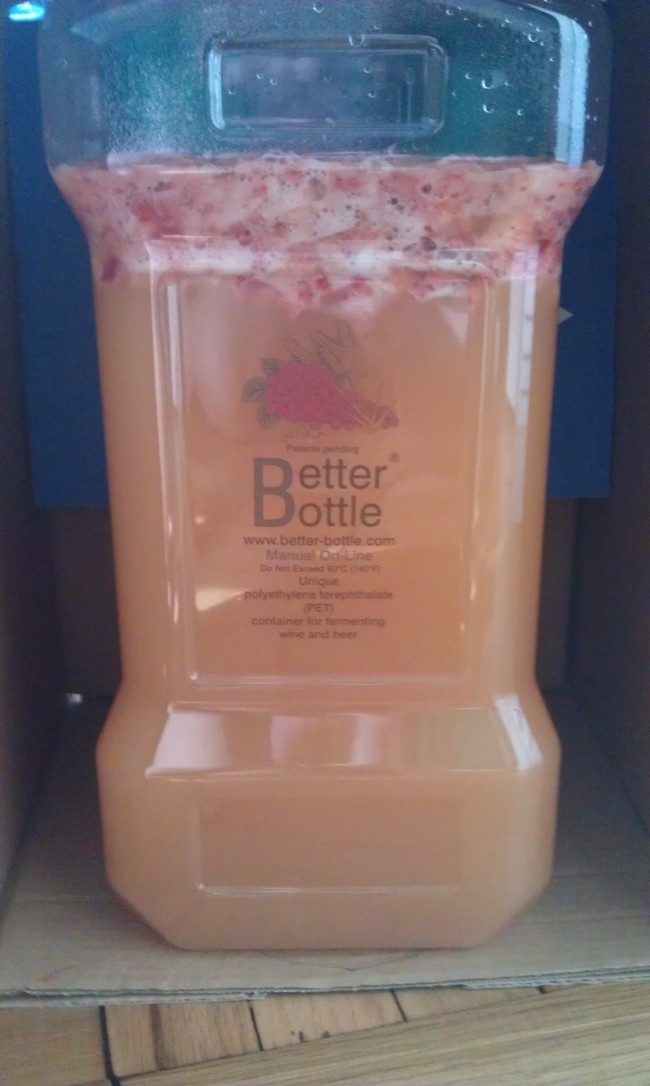Today I’d like to take the time to give some updates on my recent beers:
Strawberry Wheat
I don’t think that I’ve had a real bad batch yet, but I was honestly worried about the Strawberry Wheat beer when I was bottling. I’m not quite sure if it was because it was strong for a wheat beer (especially a fruit flavored one) or if it just had a smell that I didn’t think belonged. One thing it had going for it early on was that it was an easy drinking beer that had a decent amount of alcohol in it.
Now that it has been about a month since I bottled this batch, the flavors are evening out nicely and the strawberry flavor, which started out as just a hint at the very back end, has a nice, full strawberry taste. It isn’t as powerful as the Abita strawberry beer, but I wasn’t going for anything like that. The carbonation is higher than usual, but I like that in my wheat beers. I’d say this beer is a keeper. There is definitely a confusing note in the aroma that takes away from my first impression when I bring it up for the first sip, but I’m not sure what it is. Luckily, if I let the beer stand in the pint glass for a couple minutes before drinking, the aroma bets much better. I’m probably entering this beer into the preliminary round of the Brooklyn Wort Homebrew Competition. This will be the first time I have entered a competition and i think this brew is my most unique.
Spruce Brown Ale
This beer has been bottled, and conditioned for a couple weeks now. I took an early taste after about a week’s conditioning and got some early thoughts. This beer is much darker than I was expecting… I’m not sure why I was expecting something lighter with the C120 and Dark LME I used, but this is approaching black in the pint glass. The head foams a light brown, but obviously there isn’t that much of it right now since it hasn’t had time to fully condition. The aroma is strong, raisiny, and burnt caramel. There isn’t really any spruce notes to be seen unless I’m not certain what I should be looking for. The taste right now is similar, sweet, plum or raisin, some burnt caramel, and not too much roasty flavor, which I’m just fine with. There’s not a lot of hop flavor, just some balancing. I’m rather sure this will turn out to be a solid american brown ale, but I’m not sure the spruce flavor will ever come out. Even if there is no spruce flavor in this beer, the spruce still serves a purpose. Spruce is high in Vitamin C and that helps to keep the beer stable over a longer period of time. The jury’s still out on this one but the early feeling is that this one is going to be a solid brown ale. Speaking of brown ales, two that I’d recommend getting your hands on would be Smuttynose Old Brown Dog Ale and Avery Brewing Co.’s Ellie’s Brown Ale. Smuttynose’s is a bit more sweet, very complex, and at 6.7% ABV it is strong. Ellie’s Brown is more roasty and has tastes of vanilla and nut that Old Brown Dog doesn’t have. Either way, you can’t really go wrong with either.
I have a (hopefully) improved ESB in a secondary right now and I hope that the hot weather around here didn’t do anything to harm this batch. I’m also getting ready to brew a Belgian Wit this weekend. Belgian yeast strains can tolerate higher temperatures so this one was chosen more out of necessity than choice. Updates on both of these to follow soon.




